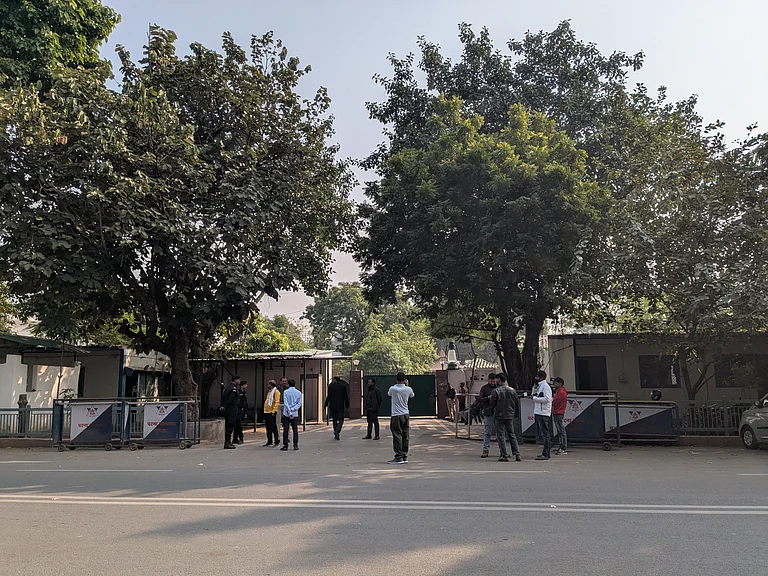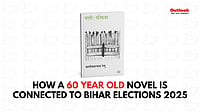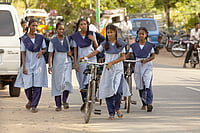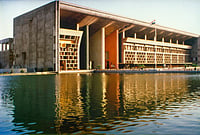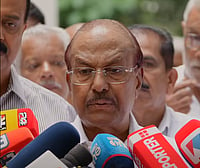
As the high-stakes vote counting unfolded in Bihar, the Rashtriya Janata Dal(RJD) is staring a sharp decline, dropping to almost half of its previous tally.
RJD was leading only on 26 seats, while in 2020, they had emerged the largest party.
This marks a devastating blow for the RJD.
In this election, the RJD contested 143 out of 243 Assembly seats, while its ally, the Congress, fought on 61 seats.
This marks a devastating blow for the Rashtriya Janata Dal (RJD), which is now set to secure its lowest seat count since 2010, when the party managed just 22 seats, securing 18.84 per cent of the vote. The situation is all the more poignant given the party's earlier resurgence. In 2015, in alliance with the Janata Dal (United) (JD(U)), the RJD made a strong comeback, winning 80 out of the 101 seats it contested and increasing its vote share to 32.92 per cent.
In the 2020 Bihar elections, the RJD emerged as the largest party within the Opposition alliance, although it still fell short of forming a government. The party secured 75 seats out of the 144 it contested, while the Congress performed poorly, winning just 19 of the 70 seats it contested. Despite this, the RJD-led Mahagathbandhan came agonisingly close to forming a government, securing 110 seats—just 12 short of a majority.
The RJD’s own tally of 75 seats was substantial, but the alliance's defeat was largely attributed to Congress's poor performance, with the party contributing only 19 seats to the grand alliance’s total. This underperformance allowed the National Democratic Alliance (NDA) to retain power, despite significant anti-incumbency sentiment.
As the current election results unfold, the RJD is facing the stark reality of further decline in support. With Tejashwi Yadav striving to maintain his family’s political legacy, it seems the Opposition may struggle to regain the momentum it once enjoyed.
For years, Congress has been seen as the weak link within the Mahagathbandhan alliance, and this election has done little to change that perception. The party’s performance has continued to deteriorate, now securing only five seats. However, the most dramatic aspect of the 2025 elections is not Congress's decline, but the RJD's sharp fall from grace.
Tensions within the alliance and problems over seat management became increasingly evident during the campaign. The RJD entered the race with an ambitious slate of candidates, but rifts with its partners and public disputes over seat-sharing muddied its message at the grassroots. In several constituencies, this disarray appears to have aided the NDA’s consolidation.
The result is likely to force a fresh look at the party’s leadership strategy, organisational structure and alliance management. For Tejashwi, a lacklustre showing in his home seat, coupled with the party’s failure to turn pledges into victories, will sharpen questions over messaging, candidate selection and whether the RJD’s appeals matched shifting voter priorities across Bihar
Tejashwi Yadav, the Mahagathbandhan’s Chief Ministerial candidate, faced an unexpectedly tight contest in the family stronghold of Raghopur. After more than five hours of counting, he was locked in a close fight with the BJP’s Satish Yadav. By evening, Tejashwi had edged ahead by more than 11,000 votes, though the margin remained narrow. Satish Yadav, a Yadhuvanshi leader and former JD(U) MLA, had earlier defeated Tejashwi’s mother, Rabri Devi, in 2010 before crossing over to the BJP.
For Tejashwi, the result marks a severe setback. Despite two decades of anti-incumbency against Nitish Kumar, the RJD has struggled to convert voter frustration into gains, hampered in part by the enduring controversies surrounding his father’s tenure, often labelled by opponents as “Jungle Raj”.
Raghopur, which voted in the first phase on 6 November with a turnout of around 64%, has long been a bastion of the Lalu Prasad Yadav family. Lalu won the seat in 1995 and 2000, serving as Chief Minister during both terms. Rabri Devi later held the constituency three times, but lost to Satish Yadav in the 2010 Assembly polls when he was with the JD(U).
Throughout the campaign, leaders of the ruling NDA, including Prime Minister Narendra Modi, Home Minister Amit Shah, and Nitish Kumar, repeatedly invoked the 'Jungle Raj' narrative. For a significant section of voters, this term continues to evoke memories of lawlessness and administrative breakdown during the 1990s, a period strongly associated with Lalu Prasad Yadav's leadership.









